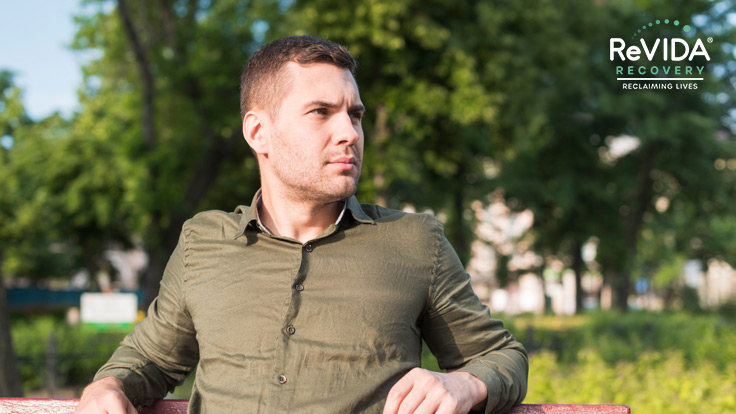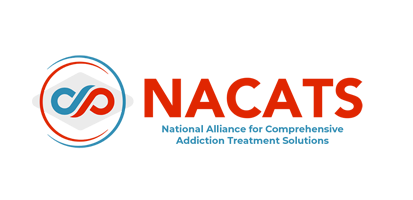
Max sat beside his son’s lifeless body, a tear escaping his eyes at the funeral home. He knew something was wrong but didn’t want to believe it. He knew his son had a past with opioids, but he had sought treatment. Max felt that his son was on a safe path even though his son had begun being distant again a few months after treatment. He assumed it was probably nothing, and his son needed time to get his life back on track.
That was until last week when his son asked for money at his front door. He seemed agitated and angry when Max asked him what it was for. He only said that he had gotten into some trouble and needed help. He assured his father that he would be fine. Max knew he should have asked more questions that day instead of just giving him the money, and now his son was gone. He blamed himself for being part of the reason when the funeral director informed him that the autopsy said his son had died from an opioid overdose. And now Max is left wondering how he didn’t see the signs of opioid addiction.
Max’s son is one of many sons, daughters, fathers, and mothers who have lost their lives to opioids in Tennessee. In 2021, 3,043 people died in Tennessee from opioids. One of the most common ways an overdose occurs is due to a return to use after treatment. This is why ReVIDA® Recovery will always welcome patients back if they experience a return to use or feel like they need more support. So, what signs of opioid addiction can people be aware of when saving a loved one’s life?
Table of Contents
Signs of Opioid Use Disorder
There are several signs that someone might be using opioids. One of those signs includes a strong desire to use, with an increased need for more substance over time. Withdrawal symptoms are also present in those with an opioid addiction – though they aren’t always noticeable to someone who doesn’t know what to look out for. People might also continue to use opioids even when it impacts their daily lives, leaving behind activities they once loved. They might also wish to stop using but find that they can’t, or they have difficulty controlling their intake of opioids or how often they take them. Opioids affect the brain, which can lead to opioid tolerance.
Physical Signs of Opioid Use Disorder
People with an opioid use disorder can show several physical signs. These include:
- Hypersomnia
- Euphoria
- Decreased pain perception
- Nausea
- Constipation
- Pinpoint pupils
- Decreased respiratory rate
- Drowsiness
- Loss of appetite
- Weight loss or weight gain
How to Tell if a Loved One Is Using Opioids
If you suspect that a loved one is using opioids, there are a few signs that you might notice. They might have burnt spoons or bottle caps, missing shoe laces, or syringes. There might also be small bags with powder residue lying around the house. If they inject opioids, they may wear long sleeves to hide marks left by needles.
There are also some behavioral signs that people might have when they are using opioids. They might change their friends or hobbies, while others turn to isolation and avoid family and friends. There will be a drop in work performance or grades at school. They might have also stolen from you or others. Some might even have a legal record because of their opioid use.

The Financial Cost of Opioid Use Disorder
Many people in the Appalachia area are feeling the effects of Appalachia’s opioid crisis. In 2015, the average cost for care due to an opioid overdose was $92,400. Between 2016 and 2017, 142,500 people visited the emergency department due to opioid overdose. In Appalachia there are 900 hospitals with 58,000 beds. Opioid overdoses take up bed space in hospital rooms.
Opioid addiction impacts the justice system as well. The annual cost of keeping one person in jail was $47,000 in 2015, and 63% of all inmates in the country have substance use disorder.
Human services are also impacted in Appalachian areas. $58 billion is invested every year into human services.Opioid use is also connected to higher child welfare incidents and increases an individual’s risk for homelessness.
How Does Opioid Use Disorder Impact Work and Home Lives?
There are several ways that opioid use can impact your work life. People who use opioids might have several days of being absent from work. When they come to work, they have an increased risk of experiencing workplace accidents if they are using. These accidents can lead to being without work due to disability. You could also become incarcerated due to opioid and opiate use, which could result in your termination from an employer.
It can also impact people’s home lives. Children in families where a parent uses opioids are more likely to experience neglect or mistreatment. They are also more likely to find their family members when they encounter an overdose, which can create trauma for them. Opioid use can also create distrust between the person with the opioid use disorder and their loved ones, and satisfaction in their social and romantic life can drop.
A loved one coming across their family or friends experiencing an overdose is common, and a medical emergency requires 911 to be called immediately. Narcan® (naloxone) can reverse the effects of an opioid overdose. Narcan® (naloxone) can be accessible to anyone with or without a prescription. If you or a loved one uses opioids, you should always keep it on standby.
Some symptoms that someone might experience when they have an overdose include:
- Shallow breathing
- Choking
- Pale or blue skin
- Faint heartbeat
- Purple lips
- Limp body
- Loss of consciousness
Can Opioid Use Disorder Impact a Loved One’s Mental Health?
Opioid use disorder does have an impact on a person’s mental health. Those who had a mental health concern before opioid use disorder are at an increased risk of developing an opioid use disorder. However, an opioid use disorder can also lead to mental health conditions such as depression or post-traumatic stress disorder (PTSD).
People can also develop anxiety from opioid use. This can lead to people feeling hopeless. They might believe that things can’t change, no matter what they do. People who use opioids might become tired both physically and emotionally because they feel like they are in a cycle of wanting to seek treatment and finding their way back to opioids. In extreme cases, this can lead to thoughts of suicide or actual suicide.
If you or a loved one are experiencing depression or another mental health concern alongside your opioid use, you must seek treatment for both. Asking for help is not a sign of weakness; instead, it is a sign of strength.
Opioid Use Disorder Withdrawal Symptoms
Many people are hesitant to seek treatment because of opioid withdrawal symptoms. These symptoms are not typically life-threatening. However, having them monitored by a medical professional is still essential because complications can occur. Symptoms usually start within 12 hours after the last use and peak around 72 hours. They will last for several weeks, depending on how long you used the opioid.
Some symptoms that you might experience when you are going through opioid withdrawal include:
- Runny nose
- Sweating
- Insomnia
- Dilated pupils
- Abdominal cramping
- Vomiting
- Agitation
- Anxiety
- Depression
- Muscle aches

Get Treatment for Opioid Use Disorder Today at ReVIDA® Recovery
Getting treatment for an opioid use disorder can be a unique and life-changing experience for many. If you are ready to start your recovery journey and reclaim your life, ReVIDA® Recovery is here to help throughout the Appalachian area. We help you with several things throughout your journey, from opioid recovery to finding a job or handling custodial proceedings. For more information about our treatment programs, call us today at 423-631-0432.
FAQs
What are the behaviors of opioid addiction?
People with an opioid use disorder may isolate themselves from loved ones and change their friend groups. They might also steal and lie from others or those that they love. Opioid use can also result in people leaving activities they once enjoyed participating in.
What are the 4 most common signs of opioid abuse?
One of the most common signs of an opioid use disorder is experiencing intense cravings when you are not using. You might also experience other withdrawal symptoms, such as insomnia, anxiety, depression, and vomiting. You might need more doses of the substance to get the same effects due to developing a tolerance to opioids. Finally, you might also find that you have lost weight or even your appetite.










